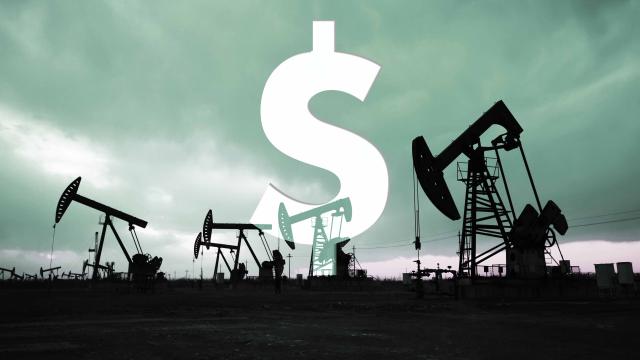
(Source: Shutterstock, Hart Energy)
NEW YORK—The mood enveloping the 25th Oil & Gas Investment Symposium (OGIS) tilted less toward silver anniversary and more toward an intervention.
While alternative investments, notably royalty holdings but also real-estate investment trusts, non-operated interests and mineral owners had strong stories to tell, most worked to put on a happy face. Among them:
All producers spoke of cash flow discipline, but only a few could state they were living within their means;
Many others highlighted their cost and debt reductions with expectations of getting to free cash;
Most stressed how cheap their shares were.
After a while, speakers started to echo the line from “Monty Python and the Holy Grail”: “I’m not dead (yet).”
A case in point was Robert J. Anderson, president of Earthstone Energy Inc. (NYSE: ESTE), which is active in the Midland Basin and Eagle Ford: “We have kept a clean balance sheet. That has helped as we try to navigate volatile commodity markets.”
Noting that this company’s stock is trading at about the value of its proved, developed, producing (PDP) reserves, he added, “It is a story that you will hear over and over today and tomorrow: all of us are heavily undervalued.”
Investors took note, yet did not seem eager to move. Of the overall conference one said, “I’m not really looking for anything in particular. I’m just trying to understand where the sector is now. I have not been paying it much attention for the past few years.”
Another investor said simply, “I have not been wowed.”
Overshadowing investor reticence was the tone from every other type of company. Conventional reservoir producers stressed their differences from unconventional producers, while royalty and non-op shops were almost rapacious. “I always wondered why the E&Ps kept drilling, kept producing even in down markets,” stated Scott Noble, founder of Noble Royalties Inc. and a driller for 12 years.
“[Producers’] stocks get crushed if they don’t replace reserves,” Noble continued. “They also have to hold acreage and rigs and crews, so they have to keep active. It takes a pretty good hamster to get on that wheel and replace the reserves. The aggressive debt culture and aggressive land culture has been the demise [of many companies]. When you add the human factor, that is more than good wells can overcome.”
Daniel C. Herz, president and CEO of Falcon Minerals Corp. (NASDAQ: FLMN), expressed a similar sentiment in a different way: “My No. 1 priority is not to mess this up, and the best way to mess up a good company is to lever up the balance sheet. Financial discipline enables strong use of free cash.”
Unconventional producers made it clear they agreed and were working diligently in that direction.
Mark Smith, senior executive vice president and CFO of California Resources Corp. (NYSE CRC) noted, “we deliberately introduced complexity to our balance sheet, and had the burden of a deep non-investment-grade balance sheet. We are moving to near-investment grade on the balance sheet to compliment our investment-grade asset base.”
California Resources has formed a joint venture with a partnership of Macquarie and Benefit Street. The partners will contribute $100 million to $150 million to the company’s $300 million to $350 million in capex for this year, with weight to conventional oil and enhanced recovery.
The marquee name in EOR is Denbury Resources Inc. (NYSE: DNR), getting more than half of its income from CO2 floods. In its presentation Denbury stated it was cash-flow positive at $50 oil. Given that convergence of interests, there was some suggestion at the event that on paper, California Resources and Denbury would be a good fit, but that was just speculation.
Free cash remained the Holy Grail for many other producers.
“This year we will get to the point of growing within our cash flow,” said Jay Ottoson, president and CEO of SM Energy Co. (NYSE: SM). “We are so close we can taste it. Everything we have done for the last two years has been to that end and we will get there later this year.”
Equally adamant was Lynn A. Peterson, president, CEO and chairman of SRC Energy Inc. (NYSE American: SRCI). “People are asking what we will do with our free cash when we get there. I tell tem let us get there first and then we will decide. Probably pay down our revolver.”
Recommended Reading
TPG Adds Lebovitz as Head of Infrastructure for Climate Investing Platform
2024-02-07 - TPG Rise Climate was launched in 2021 to make investments across asset classes in climate solutions globally.
Air Products Sees $15B Hydrogen, Energy Transition Project Backlog
2024-02-07 - Pennsylvania-headquartered Air Products has eight hydrogen projects underway and is targeting an IRR of more than 10%.
NGL Growth Leads Enterprise Product Partners to Strong Fourth Quarter
2024-02-02 - Enterprise Product Partners executives are still waiting to receive final federal approval to go ahead with the company’s Sea Port Terminal Project.
Sherrill to Lead HEP’s Low Carbon Solutions Division
2024-02-06 - Richard Sherill will serve as president of Howard Energy Partners’ low carbon solutions division, while also serving on Talos Energy’s board.
Magnolia Appoints David Khani to Board
2024-02-08 - David Khani’s appointment to Magnolia Oil & Gas’ board as an independent director brings the board’s size to eight members.






